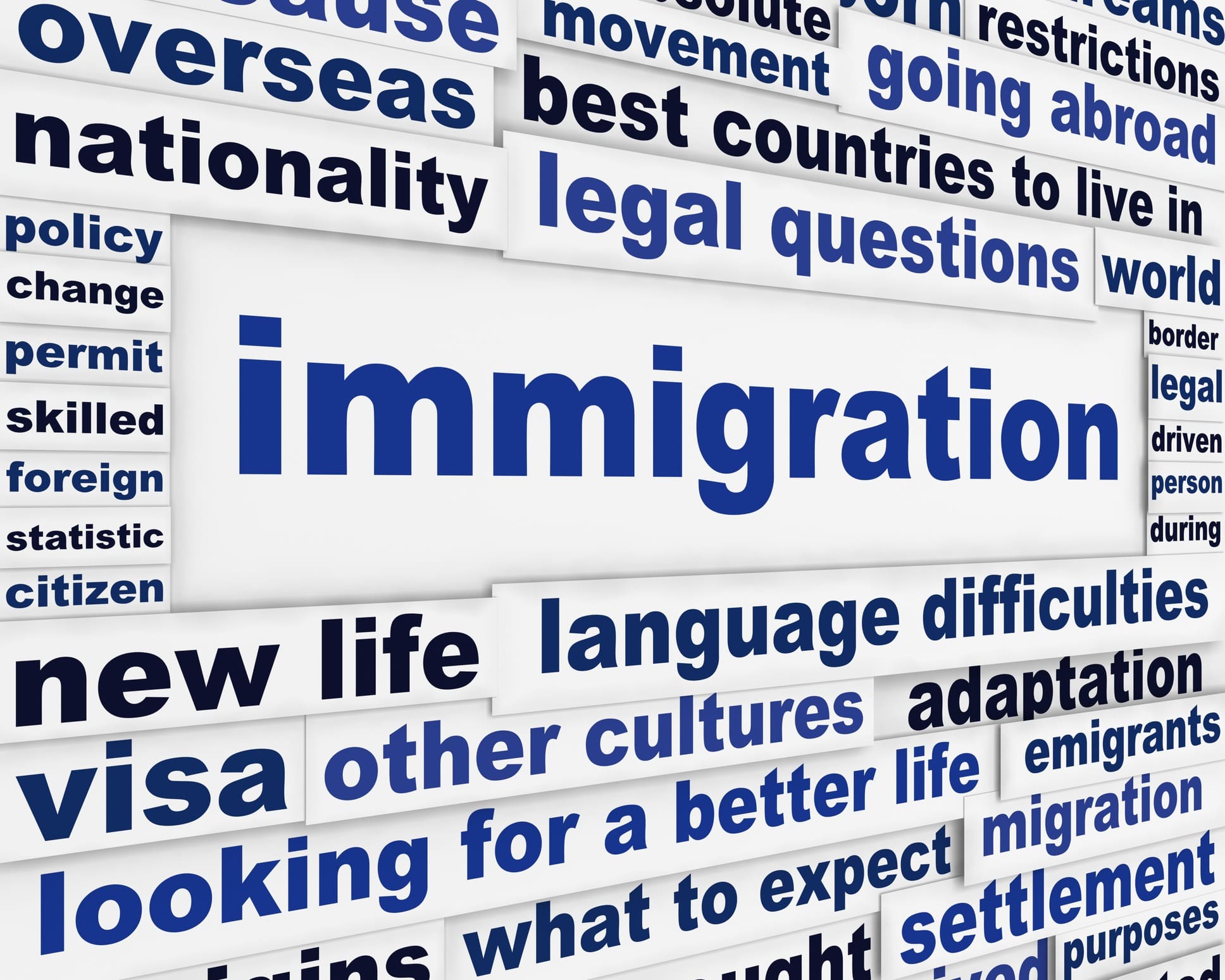Temporary Resident Permit
A Comprehensive Guide to Temporary Resident Permits (TRPs)
Introduction to Temporary Resident Permits (TRPs)
Ever feel like Canada’s immigration system is a bit of a maze? Don’t worry, you’re not alone. A Temporary Resident Permit (TRP) can be your golden ticket if you’ve been deemed inadmissible to Canada but still have a compelling reason to enter. Maybe you’ve got a prior criminal record, a medical issue, or something else standing in your way. A TRP lets you overcome that. Let’s break it all down in simple terms and get you on the path to success.
Definition and Purpose of TRP
Think of a TRP as Canada’s way of saying, “Alright, we get it. You’ve got a good reason to be here despite some red flags.” It’s a document issued by Immigration, Refugees and Citizenship Canada (IRCC), and it’s all about weighing the pros and cons of letting you in. Basically, if your reason for entering Canada outweighs the risk of your inadmissibility, you’re in.
Here’s when you might need one:
- Criminal record: Got a DUI or something similar? A TRP can still get you in.
- Medical issues: If there’s a health concern, a TRP can cover that too.
Immigration violations: Maybe you overstayed a visa or messed up some paperwork—a TRP has your back.
A Temporary Resident Permit (TRP) is a document issued by the Government of Canada to individuals who are otherwise inadmissible to enter or stay in the country. It serves as an exception to the regular immigration rules and allows individuals with specific circumstances or compelling reasons to visit, work, or study in Canada temporarily.
The TRP is typically granted to individuals who are deemed inadmissible due to factors such as criminality, health issues, or non-compliance with immigration regulations. However, it is important to note that the issuance of a TRP is discretionary, meaning that each case is evaluated on its own merits, and the decision to grant the permit lies with the Canadian immigration authorities.

Who Needs to Apply for a Temporary Resident Permit (TRP)
If any of the above sounds like you, then yeah, you probably need a TRP. Maybe you’re a business traveler with a past DUI, or you’re visiting family and have a medical condition flagged by immigration. Either way, the TRP can be your lifeline.
You should get a Temporary Resident Permit (TRP) if you can’t enter Canada but have good reasons to visit. These permits are usually given for:
- Work that benefits Canada
- Family events
- Business conferences or meetings
- Pre-arranged medical treatment
Your chances of getting a TRP depend on several factors. Your application should show that your reasons for entering Canada outweigh any potential risks. Each family member who might be inadmissible needs their own TRP too.
Types of Inadmissibility Covered
Temporary Resident Permit (TRP) commonly help with these main types of inadmissibility:
1.Criminal Inadmissibility:
-
- Convictions equivalent to indictable offenses in Canada
- Multiple summary offense convictions
- DUI-related charges
2.Medical Inadmissibility:
-
- Conditions that might affect public health
- Cases that could strain health services
3.Other Categories:
-
- Immigration violations
- Security concerns
- Financial inadmissibility
Remember that a Temporary Resident Permit (TRP) usually matches your planned stay duration – to cite an instance, see a one-week permit for a conference. You must leave Canada before your permit expires unless you get a renewal first.
Am I Eligible for a TRP?
Great question! Let’s break this down so you know exactly where you stand. A Temporary Resident Permit (TRP) isn’t just handed out to anyone—you’ve got to build a solid case to convince immigration officers that letting you into Canada is worth the risk. Here’s what you’ll need to demonstrate:
-
A Strong Reason to Enter Canada
You need a compelling reason that justifies why you must enter or stay in Canada. This could be:
- Business purposes: Attending crucial meetings, sealing deals, or participating in major conferences.
- Family matters: Visiting close relatives, attending important family events, or caring for a sick family member.
- Medical reasons: Seeking specialized medical treatment not available in your home country.
Whatever your reason, it needs to be clear, urgent, and well-supported with documentation. Immigration officers aren’t mind readers, so lay it out for them.
-
Benefits Must Outweigh Risks
The crux of a Temporary Resident Permit (TRP) application is showing that your entry to Canada has more upsides than downsides. Ask yourself:
- How does your visit positively impact you, your family, or your employer?
- Is there a humanitarian aspect, like reuniting with loved ones or getting critical medical care?
For instance, if you’re coming for business, explain how your work benefits not just you but also your employer and even the Canadian economy. Be clear about the value you bring.
-
Willingness to Follow Canadian Rules
Here’s the deal: Canada wants assurance that you’ll respect its laws and immigration policies while you’re here. This means:
- Sticking to the conditions of your TRP (e.g., leaving Canada when your permit expires).
- Avoiding any activities that could violate immigration laws, like working without authorization.
Prove that you’re a trustworthy applicant by showing a clean record and providing any supporting evidence, like employer letters or commitments to return home.
Why the Officer’s Discretion Matters
Now, let’s be real—getting a Temporary Resident Permit (TRP) isn’t a guarantee. Immigration officers have the final say, and they’ll use their discretion to weigh your application. What does that mean for you? Your application needs to be airtight. Any weak spots—like vague reasons or missing documents—can sink your chances.
This is why working with a professional, like our team can make all the difference. We’ll help you present a polished, persuasive application that covers all the bases and leaves no room for doubt. When it comes to TRPs, preparation and strategy are everything, and we’ve got the expertise to help you succeed.
So, are you eligible? Let’s work together to make sure you are!
How Do You Apply for a TRP?
Alright, let’s break this down step by step so you can navigate the Temporary Resident Permit (TRP) process like a pro. Whether you’re dealing with a past mistake, a medical issue, or an immigration hiccup, I’ve got you covered. Follow these steps, and you’ll be well on your way to getting your TRP approved.
Step 1: Gather Your Documents
This is your foundation, so make sure you’ve got all the required paperwork ready. Here’s what you’ll need:
- Application for Temporary Resident Permit: This is the official form you’ll need to fill out. Double-check everything before submitting.
- A killer explanation letter: Be upfront about your inadmissibility and clearly explain why you need to enter Canada. Make it personal, compelling, and backed by evidence.
- Supporting documents: Depending on your situation, this could include police records, medical reports, or proof of your reason for entry (e.g., business invitations or family obligations).
- Proof of financial support: Show you’ve got the funds to support yourself while in Canada. Bank statements, pay stubs, or a letter from your employer work well here.
- A valid passport: Make sure it’s up to date and will remain valid for the duration of your stay.
Pro tip: Organization is key. Keep everything in a neat file, and make sure your documents are complete and legible. Immigration officers appreciate applicants who make their job easier.
Step 2: Submit Your Application
Once your documents are ready, it’s time to submit your application. Here’s where you can do it:
- At a Canadian visa office abroad: If you’re planning ahead, this is the way to go.
- At a port of entry (POE): Got an urgent situation? You can apply for a Temporary Resident Permit (TRP) right at the border or airport. Just be prepared to explain why your case is urgent.
Make sure to keep a copy of your entire application for your records—trust me, it’ll come in handy if there’s any follow-up.
Step 3: Pay the Fees
No way around it—Temporary Resident Permit (TRP) come with a price tag. The processing fee is CAD $239.75, and it’s non-refundable, so make sure your application is solid before you pay. You can pay online or in person, depending on where you’re submitting your application.
Step 4: Be Ready for an Interview
In some cases, immigration officers might want to chat with you face-to-face to get a better sense of your situation. Don’t stress—this is your chance to make a strong impression. Here’s how to nail it:
- Be honest and straightforward: Explain your situation clearly and stick to the facts.
- Show your preparedness: Bring all your documents and reference them as needed.
- Stay calm and confident: Officers are human too, and a calm, respectful demeanor can go a long way.
Remember, the interview is your opportunity to make your case directly to the person who will decide your application, so take it seriously.
Criminal Record and Background Check Documents
Criminal background documentation is a vital part of your TRP application process. Let’s get into the specific requirements that will make your application stronger.
Police Certificates Requirements
You’ll need police certificates from each country where you’ve lived for six months or more since turning 18. These certificates go by different names:
- Police clearance certificates
- Good conduct certificates
- Judicial record extracts
- State clearance documents
Your certificate needs both the original document and a certified translation if it’s not in English or French. Current residents must submit a police certificate issued within 6 months of their application.
Court Documents and Records for TRP Application
You must submit complete court documentation if you have criminal convictions. Required documents include:
- Criminal conviction certificates
- Copies of the laws under which you were convicted
- Official proof of sentence completion
- Probation or parole officer’s reports (if applicable)
- FBI criminal record check (for U.S. convictions)
Submit complete records instead of partial documentation. Missing court documents could lead to your application’s rejection.
Rehabilitation Evidence for
Rehabilitation evidence shows that you lead a stable lifestyle and won’t likely participate in future criminal activity. Specific timelines determine your eligibility to think over rehabilitation:
Offenses committed outside Canada make you eligible after:
- Five years from your sentence completion
- Five years from when you committed the offense
Of course, deepening your rehabilitation case needs supporting documents like:
- Character reference letters
- Proof of stable employment
- Evidence of community involvement
- Documentation showing positive life changes
Canadian convictions require you to get a record suspension (formerly called a pardon) from the Parole Board of Canada before becoming admissible. Processing times vary, so start this process early to avoid delays in your TRP application.
Supporting Documents for Your TRP Application
Let’s face it—when it comes to applying for a Temporary Resident Permit (TRP), supporting documents are the backbone of your case. You’re essentially building a story for the immigration officer to show why you deserve entry to Canada, and the right documents bring that story to life. Here’s everything you need to know about putting together a rock-solid TRP application.
Proof of Ties to Your Home Country
One of the first things immigration officers look for is whether you have strong reasons to return to your home country. This helps prove you won’t overstay your welcome. Here’s what you can include:
-
Employment Ties
- Leave of absence letter: Get a formal letter from your employer stating you’re taking time off and that your job will still be there when you return.
- Recent pay stubs: Show you’re actively employed and earning a stable income.
- Future job offers: If you have a new position lined up, include the offer letter to demonstrate your return plans.
-
Property Ownership
- Property deed: A legal document showing you own property in your home country works wonders in proving you’re rooted there.
- Mortgage agreements: Provide documents showing you’re financially tied to your home through real estate investments.
- Lease contracts: Even if you’re renting, a lease agreement helps establish your connection to your home country.
-
Family Connections
- Marriage certificates: These prove you have a spouse waiting for you back home.
- Birth certificates of dependents: If you have kids, their birth certificates strengthen your case.
- Family registration documents: In some countries, these official records help show family ties.
Financial Documents
You need to show you can support yourself while in Canada without becoming a burden on the system. Here’s what works best:
-
Bank Statements
- Include account holder’s name, account numbers, current balance, and transaction history for at least the last six months.
- Immigration officers want to see that your funds are legitimate and accessible.
-
Proof of Funds
Bank letters: Official letters from your bank confirming your account balance add credibility.
Travel Itinerary and Purpose
A well-defined travel plan can make or break your application. Immigration officers want to know exactly what you’ll be doing in Canada and for how long.
-
Detailed Travel Schedule
- List your entry and exit dates.
- Include the cities you plan to visit and the activities you’ll engage in.
-
Purpose Documentation
- Write a clear letter explaining why you’re visiting Canada. Whether it’s for business, family, or medical reasons, make your case clear and compelling.
- Provide evidence supporting your purpose, like a business invitation, a family event, or a medical appointment.
Add accommodation details, such as hotel reservations or a letter from a host.
Explanation Letter
This letter is where you get personal and explain your situation in detail. Think of it as the heart of your Temporary Resident Permit TRP application.
Include:
- Details about your inadmissibility: Be honest and upfront. Explain what caused your inadmissibility, whether it’s a past conviction, a medical condition, or something else.
- Justification for TRP issuance: Explain why entering Canada is so important, whether it’s for work, family, or urgent medical treatment.
- Changes in circumstances: If you’ve had a previous TRP, highlight any positive changes since your last application.
Pro Tip: Stay Organized
A well-organized application doesn’t just look good—it shows you’re serious. Use a checklist, label your documents, and present them in a logical order. Remember, the easier you make it for the officer, the better your chances of approval.
Finally, your specific situation might require additional documents, so be prepared to go above and beyond. When in doubt, consult with a professional (like us!) to ensure you’ve got everything covered. After all, a strong TRP application is your ticket to getting past that border and into Canada!
Additional Documents Based on Inadmissibility Type
Let’s get into the specific documents you’ll need based on your type of inadmissibility. You need to understand these requirements to submit a successful TRP application.
Criminal Inadmissibility Documents
We need complete documentation that shows your rehabilitation progress for criminal inadmissibility applications. Here are the key documents:
- Criminal conviction certificates and statute details
- Proof of sentence completion, including fine payments
- Evidence showing low risk of reoffending
- Documentation of rehabilitation efforts
- FBI criminal record check (for U.S. convictions)
Medical Inadmissibility Requirements
Medical inadmissibility cases need detailed health-related documentation. We review these applications based on potential risks to public health and healthcare service needs. Your application should include:
- Letter from medical professional describing your condition
- Detailed treatment plan
- Proof of medical treatment arrangements in Canada
- Financial documentation for medical costs
Medical Condition Type |
| Chronic Conditions |
| Communicable Diseases |
| Mental Health Issues |
Required Documentation |
| Treatment history, specialist reports |
| Current health status, treatment plan |
| Psychiatric evaluation, treatment records |
Other Inadmissibility Categories
We process applications for many types of inadmissibility. Each case needs specific documentation based on its nature:
Financial Inadmissibility:
- Bank statements showing current financial status
- Proof of income or assets
- Financial support documentation
Immigration Violations:
- Detailed explanation of previous violations
- Evidence of changed circumstances
- Documentation showing ties to home country
Temporary Resident Permit (TRP) application processing times vary based on the type of inadmissibility. Applications with criminal records take 3-6 months to process. Medical inadmissibility cases might need more than three months if new medical examinations are required.
About 1,000 people face medical inadmissibility to Canada each year. About 25% of these cases involve special education services needed for children.
Family-based applications have special considerations. We make exceptions for spouses, common-law partners, and dependent children through the Family Sponsorship category. The excessive demand component doesn’t affect medical admissibility for family-sponsored applications.
Applying for a temporary Resident Permit (TRPs)

To apply for a TRP, individuals must submit a comprehensive application that includes detailed information about their inadmissibility grounds, the purpose of their visit or stay in Canada, supporting documents, and any additional information or evidence that can strengthen their case. The application process usually involves a thorough assessment of the applicant’s criminal history, risk factors, and potential impact on Canadian society.
Applicants are required to demonstrate that their entry or presence in Canada is justified and outweighs any potential risks associated with their inadmissibility. This often involves providing strong evidence of rehabilitation, demonstrating their contribution to Canadian society, highlighting family ties or humanitarian considerations, or showcasing compelling reasons for their temporary stay.
The duration of a TRP varies depending on the circumstances of the individual case but is typically granted for a specific period. It is important to note that a TRP does not provide permanent status in Canada, nor does it guarantee subsequent approvals. Individuals must adhere to the conditions outlined in the TRP and depart Canada before its expiration unless they have successfully applied for an extension or a different immigration status.
The Temporary Resident Permit is an instrument that acknowledges exceptional circumstances and allows individuals who would typically be inadmissible to enter or stay in Canada temporarily. Its issuance is based on careful consideration of various factors to ensure that the integrity of the immigration system is maintained while also taking into account humanitarian and compelling reasons presented by the applicants.
Applying for a TRP involves overcoming inadmissibility
Applying for a Temporary Resident Permit (TRP) in Canada involves overcoming inadmissibility based on grounds such as criminality, health issues, or non-compliance. If you find yourself in this situation, you have two options for applying for a TRP: through a Canadian Consulate or at a Canadian Port of Entry.
The recommended method is to apply at a Canadian Consulate near your location. This involves submitting an application and the necessary supporting documents, after which you would await approval before making plans to travel to Canada.
In cases of urgency where time is limited, applying at a Canadian Port of Entry is an alternative. This method is typically used during emergencies when there isn’t sufficient time to apply through a Consulate and wait for their approval.
Regardless of the application method, you will need to complete a Temporary Resident Visa form, specifying the grounds of your previous denial (i.e., the inadmissibility issue) and providing immediate reasons for your need to enter Canada. Examples of valid reasons can include business purposes or attending a family emergency, such as a funeral.
To increase your chances of obtaining a TRP, you must demonstrate that, despite your inadmissibility, you pose a low risk and that your reasons for visiting Canada are legitimate and significant. It is essential to show that you intend to leave the country at the end of your authorized stay. Additionally, a non-refundable processing fee of $200 must be paid.
At Akrami & Associates, we have a track record of successfully assisting applicants in obtaining Temporary Resident Permits for Canada. We understand that the process can be overwhelming, but with the guidance of our experienced legal professionals, it can be made more manageable. To learn more about our services and how we can support you, contact us today.
Navigating Inadmissibility
Have you faced a recent denial of immigration to Canada? Are you dealing with grounds of inadmissibility, such as DUI or DWI charges? If you have a compelling reason to visit Canada, you might be wondering how to proceed. In this article, we will explore the process of obtaining a Temporary Resident Permit (TRP) in Canada, providing up-to-date information about inadmissibility and the steps involved.
Inadmissibility to Canada can be categorized into various reasons, including security concerns, criminal convictions (such as DUI or DWI offences), health-related issues, and misrepresentation on your application. If you have been found inadmissible based on any of these grounds, it is not the end of the road. There is still a possibility of entering Canada with a Temporary Resident Permit.
If you have faced a denial for entry into Canada and believe you have a valid reason to visit, a Temporary Resident Permit might be a viable solution. By understanding the grounds of inadmissibility and following the proper application procedures, you can present a strong case. Don’t hesitate to reach out to Akrami & Associates for professional assistance. Book a consultation today to discuss your options and increase your chances of obtaining a Temporary Resident Permit.
Obtaining a Temporary Resident Permit
To acquire a Temporary Resident Permit, you must present compelling reasons that outweigh any potential risks to Canada and its citizens. The application process may vary depending on whether you are from a visa-exempt country or not.
For visa-exempt countries:
If you are from a visa-exempt country, you will need to follow specific procedures based on the visa office handling applications from your region. It is crucial to submit a Temporary Resident Visa (TRV) application, including supporting documents that explain the grounds of your denial and why you should be granted entry into Canada.
For non-visa-exempt countries:
If you are not from a visa-exempt country, the process involves submitting a Temporary Resident Visa (TRV) application along with supporting documents that outline the reasons for your denial and provide arguments as to why you should be permitted entry.
Seeking Professional Assistance:
Obtaining a Temporary Resident Permit is not guaranteed, and the application process can be complex. To improve your chances and ensure a well-prepared application, it is advisable to seek assistance from experienced legal professionals such as Akrami & Associates. With their guidance, you can receive valuable legal advice and support throughout the process.
How Long Does it Take to Obtain a Temporary Resident Permit?
If you have been deemed inadmissible to Canada and previously denied entry, there are still options for you to enter the country if your reasons are justified. This applies even if you have criminal records, present health or security risks, or have other admissibility concerns.
There are two methods to apply for a Temporary Resident Permit (TRP):
Applying at a Canadian Consulate in your home country:
Canada generally encourages individuals to apply from their home country. If you have sufficient time to wait for the approval, this is the recommended approach. However, keep in mind that processing times can vary depending on the number of applications and the urgency of your case. It may take up to a year for your application to be processed.
Applying at a Port of Entry:
If you have an immediate need to enter Canada for justified reasons, you can apply for a TRP at a Port of Entry. If your application is successful, you will be granted entry immediately. However, it’s important to consider the expenses involved in travelling to a Canadian border only to be potentially denied entry.
Does a Temporary Resident Permit (TRP) expire?

Yes, a Temporary Resident Permit (TRP) can have an expiry date. The duration of a TRP can range from one day to a maximum of three years, depending on the discretion of the immigration officers reviewing the application. Several factors are considered when determining the length of time for which a TRP should be granted. These factors include:
Compliance with Previous Application Conditions
Any history of violating the conditions of a previous TRP or visa application may impact the decision regarding the length of a new TRP.
It’s important to note that the decision on the duration of a TRP rests with the immigration officers, and they have the authority to grant a TRP for a specific period that aligns with the individual’s circumstances and the purpose of their visit to Canada.
Is applying for a Temporary Resident Permit (TRP) always necessary?
A Temporary Resident Permit (TRP) provides a temporary solution for addressing inadmissibility issues. However, if you wish to address your inadmissibility on a permanent basis, you may need to apply for criminal rehabilitation.
To be eligible for criminal rehabilitation, a period of five years must have passed since the completion of your sentence, which includes probation, fines, jail time, etc.
However, depending on the nature of the offence, you may need to wait for a period of 10 years, or you may be considered deemed rehabilitated. Deemed rehabilitation applies when 10 years have passed since the completion of your sentence, and you have no other summary or indictable convictions in Canada within the last 10 years. Additionally, you should not have more than one summary conviction within the last 10 years.
It is important to understand that a TRP provides temporary relief from inadmissibility, while criminal rehabilitation offers a permanent resolution to address your inadmissibility concerns.
For more specific and up-to-date information regarding your individual circumstances and the best course of action, it is recommended to consult with a qualified immigration professional or legal representative who can guide you through the process.
If Your eTA or TRV application was refused due to inadmissibility
If your application for an Electronic Travel Authorization (eTA) or Temporary Resident Visa (TRV) was refused due to inadmissibility issues, you will need to apply for a Temporary Resident Permit (TRP) to overcome these concerns.
The TRP application needs to be submitted at the consulate level, and the processing time for a decision can range from 3 to 12 months. Once you receive a positive decision on your TRP application, you can then proceed to apply for an eTA or TRV, also known as a visitor visa.
However, if you possess a valid nonimmigrant visa (such as a US visa) or have an approved Electronic System for Travel Authorization (ESTA), you have the option to travel to a Canadian border entry point. There, you can request a same-day decision on your admissibility at the port of entry, avoiding the waiting period of 3 to 12 months associated with consulate decisions.
It is important to note that the specific requirements and procedures may vary depending on your individual circumstances and the nature of your inadmissibility issues. Seeking guidance from a qualified immigration professional or legal representative is recommended to ensure you follow the correct process and increase your chances of a successful outcome.
Why Do TRPs Get Denied?
Not all Temporary Resident Permit (TRP) applications make the cut, and here’s why:
- Not enough evidence to support your entry
- Failing to show the benefits outweigh the risks
- Weak ties to your home country
- Sloppy or incomplete applications
But don’t stress—we’ll make sure your application is rock solid.
A successful TRP application demands proper documentation. You must authenticate, translate, and format all documents according to IRCC guidelines to avoid delays or rejection. Your specific inadmissibility situation determines the documents you need. Medical cases require detailed health records, while criminal inadmissibility needs court documents and rehabilitation evidence. Proof of financial stability and strong ties to your home country will make your TRP application stronger.
Many applicants choose to book a paid consultation because of complex documentation requirements. They benefit from hiring an immigration law firm. Start your application process early, keep copies of all submitted documents, and track your application status regularly.
Note that a well-documented TRP application substantially increases your approval chances. Your careful preparation and attention to detail will create a smooth path toward your temporary residence in Canada.
Tips for Nailing Your TRP Application
Here are some insider tips to boost your chances:
- Tell Your Story Clearly: Be upfront and honest about your situation. A strong explanation goes a long way.
- Back It Up with Evidence: Whether it’s letters from employers, doctors, or family, bring the receipts.
Work with an Expert: This is where we come in. With our guidance, you’ll avoid common pitfalls and submit a bulletproof application.
Final Thoughts
A Temporary Resident Permit might seem like a daunting process, but it doesn’t have to be. Whether you’re dealing with a criminal record, medical issues, or past immigration hiccups, the right support can make all the difference. Let Akrami & Associates handle the heavy lifting so you can focus on what really matters. Ready to take the next step? Reach out today and let’s make it happen!
Questions and Answers about Temporary Resident Permits (TRP) in Canada:
FAQ’S
We Can Help You With Your Temporary Resident Permit Application!

Here at Akrami & Associates, we recognize the complexities and challenges associated with obtaining a TRP. Our experienced team is well-versed in the intricacies of the application process and can guide you through every step. We understand the importance of effectively demonstrating the genuine need for your travel while mitigating any potential risks to Canadians.
By collaborating with our knowledgeable legal professionals, you will benefit from our expertise in presenting a compelling case for your Temporary Resident Permit. We will work closely with you to gather the necessary documentation, provide strategic guidance, and navigate the intricacies of the application process. Our goal is to help you overcome the hurdles of inadmissibility and secure your TRP, enabling you to pursue your travel plans to Canada.
Don’t let inadmissibility stand in your way. Contact Akrami & Associates today to embark on the journey of obtaining your Temporary Resident Permit. Our dedicated team is ready to assist you in demonstrating your need to travel while effectively addressing any potential risks. Take action now to ensure a smoother process and increase your chances of a successful outcome.
With Akrami & Associates, we simplify the process for both TRPs and TRVs, guiding you through each step to ensure a seamless application. Whether you’re dealing with inadmissibility or simply need help securing a visa, we’re here to help you make your case strong and clear. Reach out today.
More Related Content
Call us for
more Information
+1-416-477-2545
Toll Free: 1-877-820-7121
Call us today
Write Us (Online Form)
Complete our form and one of our
Representatives will contact you.
Immigration inquiries

Call us for
more Information
+1-416-477-2545
Toll Free: 1-877-820-7121
Call us today

Write Us (Online Form)
Complete our form and one of our
Representatives will contact you.
Immigration inquiries
Subscribe To Our Newsletter


